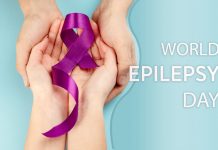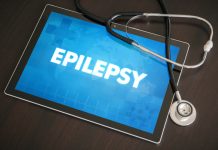UK-based charity, Epilepsy Action, outlines how glioma-related epilepsy can heavily impact a person’s quality of life, drawing on the need for further research and treatment options
Epilepsy is one of the most common complications of brain tumours. It affects approximately 60-80% of patients with glioma and 23-50% of patients with glioblastoma (highly invasive tumours). (1) These patients’ primary symptoms are seizures, accompanied by sudden limb spasms and loss of consciousness.
Living with glioma-related epilepsy
Gliomas are graded from I to IV, depending on their growth potential and aggressiveness. People with grade II gliomas are more likely to develop epilepsy. Those with grade IV gliomas are the least likely to develop it. Age can also play a role. Young people with gliomas are more likely to develop epilepsy, while older people are less likely. Gender does not seem to be a factor. (2)
Purple Day 2019 – Helping children with epilepsy live better
Epilepsy – whether glioma related or not – can significantly impact a person’s quality of life. For example, it can affect their ability to drive, their independence, social life, and work. But how does epilepsy specifically impact the quality of life for people with brain tumours?
Epilepsy and glioma can make a difficult situation even worse. Epilepsy impacts a patient’s memory, making remembering things like medication harder. The side effects of those medications can also be worse with both conditions. Anti-cancer and anti-seizure medications can sometimes interact and cause side effects. The more drugs a patient is taking, the more likely there are to be difficulties.
Epilepsy patients can have seizures that cause injuries. For instance, if a person has a drop fall (atonic seizure) and breaks a bone or has severe bruising, this can lead to delays in treatments for their brain tumour, delaying surgeries or radiotherapy.
Treatment for glioma-related epilepsy
Each patient needs tailored treatment for glioma-related epilepsy, with input from a multidisciplinary team.
It is vital that specialist healthcare providers are in conversation. For many people, that treatment involves surgery, radiotherapy and temozolomide chemotherapy for the cancer, and levetiracetam for their epilepsy – as it has few drug-to-drug interactions.
If levetiracetam is ineffective, the patient may be prescribed additional anti-seizure medications such as valproate or lamotrigine. Enzyme-inducing anti-seizure medications, such as carbamazepine, should be avoided if the patient is undergoing chemotherapy, as these can affect the effectiveness of cancer treatments. (3)
The risk of drug-to-drug interactions between cancer and epilepsy drugs needs to be considered carefully. As does the issue of side effects. Anti-seizure medications have numerous side effects, and these can include depression, anxiety, psychosis, mood swings, weight gain, nausea, insomnia and dizziness.
Further research is needed for acquired epilepsy
Unfortunately, 20% of people with glioblastoma multiforme, a fast-growing and aggressive brain tumour, do not achieve seizure freedom when using anti-seizure medications. Having glioma and epilepsy can be much more detrimental than having just one of those conditions.
Epilepsy Action would like to see more research into acquired epilepsies, particularly into avoiding those drug interactions that make life so hard for people with multiple conditions. The charity would also like to see the creation of new anti-seizure medications that do not interact with chemotherapy and other cancer drugs.
The lifetime risk of having epileptic seizures is profoundly increased in patients with cancer, and it is important that patients are able to receive treatments for both conditions safely. (4)
References
- https://www.nature.com/articles/s41598-022-10753-4
- Ge, H., Di, G., Yan, Z. et al. Does epilepsy always indicate worse outcomes?
A longitudinal follow-up analysis of 485 glioma patients. World J Surg Onc 20, 297 (2022). https://doi.org/10.1186/s12957-022-02772-2 - https://www.ncbi.nlm.nih.gov/pmc/articles/PMC6657392/
- https://www.thelancet.com/journals/lanonc/article/PIIS1470-2045(12)70266- 8/fulltext#:~:text=The%20lifetime%20risk%20of%20having,epilepsy%20of%2 020%E2%80%9380%25











